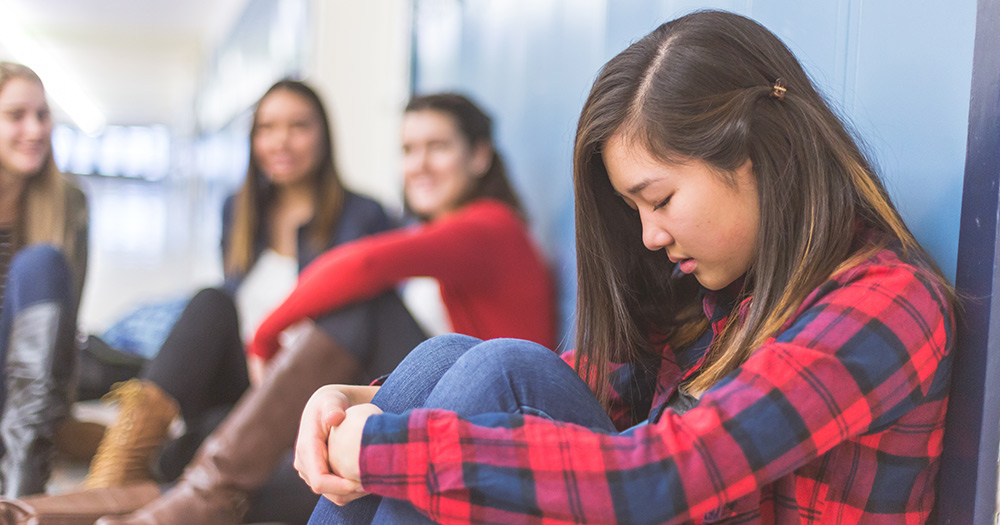Political attacks on public schools are pervasive and growing, hindering learning and the role schools play in a diverse democracy, according to a new study by researchers at University of California, Los Angeles and UC Riverside.
The brief, “Educating for a Diverse Democracy in California,” found that political division and conflict reflective of national trends is negatively impacting students, with many California youth experiencing hostility and intolerance in school.
Surveying 150 high school principals throughout the state, researchers found high levels of hostile comments toward LGBTQ students, and racist remarks targeting Latino and African American students. The analysis compares the experiences of schools in “blue” congressional districts, where Donald Trump received less than 45 percent of the vote in the 2020 presidential election, and “purple” districts, where Trump received 45–54.9 percent of the vote. Trump received greater than 55 percent of the vote in only two California congressional districts, which were not included in the study.
“Principals leading California high schools in purple communities were far more likely than those leading schools in blue communities to report that community conflict occurred frequently over issues such as those impacting LGBTQ students, teaching about race and racism, and efforts to limit access to books,” Joseph Kahne, co-director of the Civic Engagement Research Group at UC Riverside and co-author of the research, said in a statement. “And unfortunately, political conflict over highly charged educational issues is on the rise. More than four in 10 California principals said that the amount of community level conflict was more than prior to the pandemic.”
Key findings
Nearly two-thirds of principals surveyed reported substantial local political conflict over hot button educational issues, but those in purple communities were far more likely than those in blue communities to report that community conflict occurred frequently. Principals in purple communities were 2.5 times as likely as principals in blue communities to report frequent community conflict related to LGBTQ issues, for instance, at 28 percent and 12 percent respectively.
That community conflict often makes its way into the classroom, researchers found. More than 70 percent of principals reported that students made demeaning or hateful remarks to liberal or conservative classmates, with those in purple communities once again citing the problem as “frequent.” While 42 percent of principals said the incidence of intolerance between students had grown since before the pandemic, 64 percent of principals in purple communities reported higher levels of intolerance.
Specifically, 78 percent of respondents said their students had made hostile or demeaning remarks to LGBTQ classmates, 50 percent reported racist statements directed at Latino students and 66 percent reported racist remarks had been made about African American students.
“The findings regarding derogatory or hostile remarks toward African American students are particularly striking,” said John Rogers, director of the UCLA Institute for Democracy, Education and Access and co-author of the research. “The two-thirds of California principals identifying such incidents is identical to reporting across the nation, even though African Americans make up 5 percent of the K-12 population in the state, compared to 15 percent nationally. Moving forward, we need to redouble our commitment to ensuring that all California students feel safe and respected in our public schools.”
Moving forward
Despite the many ways in which community conflict and student hostility in California schools reflect national patterns, researchers noted one critical difference: whereas the heightened political conflict in purple communities has diminished efforts to educate for a diverse democracy across the U.S., that pattern does not seem to hold in California. For example:
- Nationally, education leaders in purple communities were 22 percent less likely than those in blue communities to speak out about the importance of LGBTQ student rights. In California, they were equally likely.
- Principals in purple communities across the country were 20 percent less likely than in blue communities to provide professional development to support learning about the literature and history of people from different ethnic and racial backgrounds. In California, schools in purple communities were actually 5 percent more likely to offer this than in blue communities.
“One possible explanation for this divergence is that state policies supporting LGBTQ rights and Ethnic Studies in California send a signal to educators that practices associated with educating for a diverse democracy represent valued professional practice,” the report states. “It is also the case that California’s move toward an Ethnic Studies requirement for high school graduation creates a clear incentive for schools and districts to create conditions that will ensure student success.”
Looking ahead, researchers noted that education must support students in learning about varied cultural experiences, accomplishments and even the more problematic shortcomings of our multiracial society to build strong learning communities that engage students and create a more caring and respectful school culture.
The broader public also has a role in countering attacks on public education, researchers concluded. “The problem with our current moment is not too much democracy, but too little,” the report states. “Public school governance, at its best, brings together diverse members of the community to forge a vision for a shared future — one that embraces the values of a diverse democracy. At this moment, what is needed is for a broad cross-section of the public to stand up and support this priority.”





